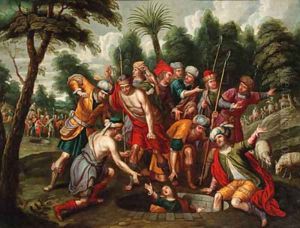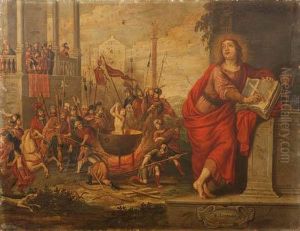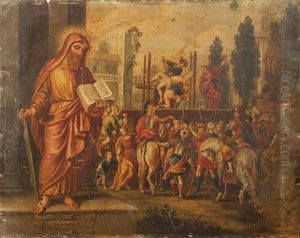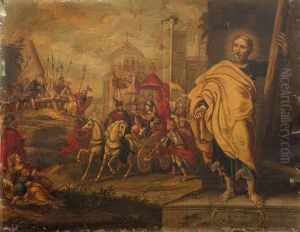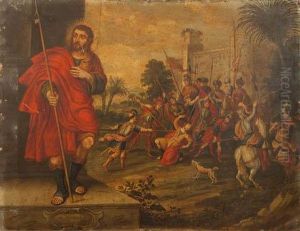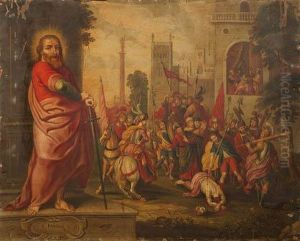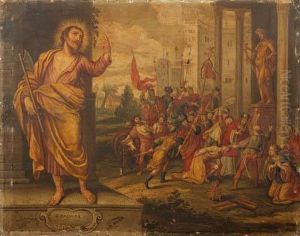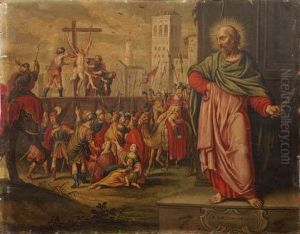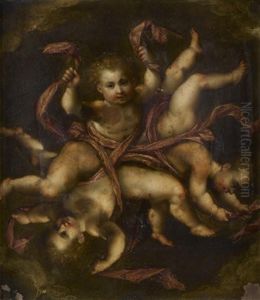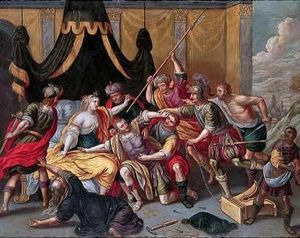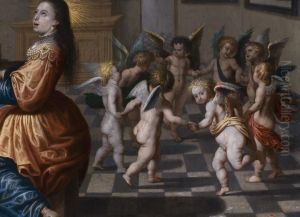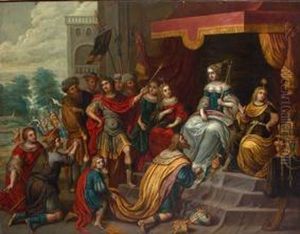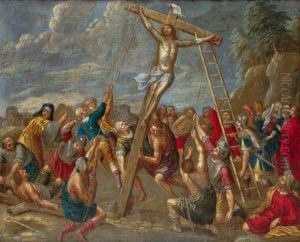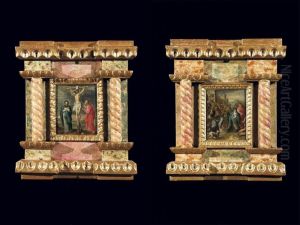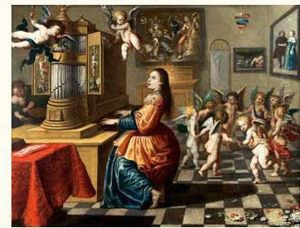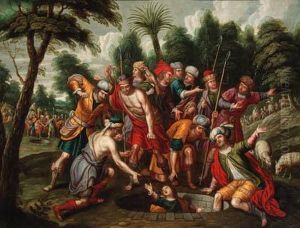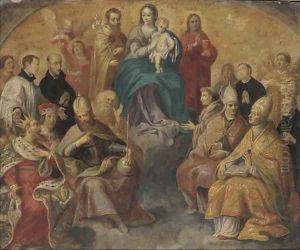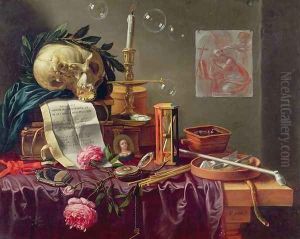Peeter Sion Paintings
Peeter Sion was a Flemish Baroque painter, known primarily for his religious and history paintings. Born in Antwerp in 1620, Sion was part of a family of artists, which was not unusual in the Flemish art scene of the time. He was active during the Golden Age of Flemish painting, a period marked by a flourishing of the arts in the Southern Netherlands.
Sion trained under the guidance of his father, Jan Sion, who was also a painter. He became a master in the Antwerp Guild of Saint Luke in 1646, which was an important milestone for artists of the era as it allowed them to sell their work and take on apprentices. His style was influenced by the great Flemish masters such as Peter Paul Rubens and Anthony van Dyck, whose works dominated the art scene in Flanders during the early to mid-17th century.
Throughout his career, Sion developed a reputation for his large-scale religious works, which were often commissioned for churches and monasteries. These pieces are characterized by dramatic lighting, rich colors, and a sense of movement, features that are typical of the Baroque style. He also painted mythological scenes and portraits, although these are less well-known compared to his religious compositions.
Despite his talents, Peeter Sion did not gain the same level of fame as some of his contemporaries. Nonetheless, his paintings still demonstrate the skilled craftsmanship and the dynamic Baroque spirit of his time. He continued to work and contribute to the artistic life of Antwerp until his death in 1695.
Today, Sion's works can be found in various museums, and his contributions to Flemish art are recognized by art historians. While not a household name, Sion remains an example of the many skilled artists working in the shadow of the great masters, contributing to the rich tapestry of Baroque art.
